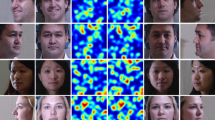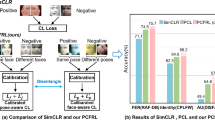Abstract
In order to address the impact of large-angle posture changes on face recognition performance, we propose a contour symmetric constraint-generative adversarial network (CSC-GAN) for the multi-pose face recognition. The method employs the convolutional network as the generator for face pose recovery, which introduces the global information of the constrained pose recovery of positive face contour histogram. Meanwhile, the original positive face is used as the discriminator, and the symmetric loss function is added to optimize the learning ability of the network. The positive face with gesture recovery is obtained by striking the balance between training of the generator and discriminator. Then we employed the nearest neighbor classifier to identify. The experimental results show that CSC-GAN obtained good posture reconstruction texture information on the multi-pose face reconstruction. Compared with the traditional deep learning method and 3D method, it also achieves higher recognition rate.
Access this chapter
Tax calculation will be finalised at checkout
Purchases are for personal use only
Similar content being viewed by others
References
Zhu Z, Luo P, Wang X, et al. Deep learning identity-preserving face space. In: Proceedings of the IEEE international conference on computer vision. Darling Harbour, Sydney; 2013.
Taigman Y, Yang M, Ranzato MA, Wolf L. Closing the gap to human-level performance in face verification. In: CVPR, Colombia; 2014.
Sun Y, Wang X, Tang X. Deep learning face representation from predicting 10,000 classes. In: CVPR, Colombia; 2014.
Taigman Y, Yang M, Ranzato MA, Wolf L. Web-scale training for face identification. arXiv:1406.5266; 2014.
Asthana A, Marks TK, Jones MJ, Tieu KH, Rohith M. Fully automatic pose-invariant face recognition via 3D pose normalization. In: ICCV, Barcelona, Spain; 2011.
Kan M, Shan S, Chang H, et al. Stacked progressive auto-encoders (spae) for face recognition across poses. In: Proceedings of the IEEE conference on computer vision and pattern recognition; 2014. p. 1883–90.
Zhu Z, Luo P, Wang X, et al. Multi-view perceptron: a deep model for learning face identity and view representations. In: Advances in Neural Information Processing Systems; 2014. p. 217–25.
Goodfellow I, Pouget-Abadie J, Mirza M, Xu B, et al. Generative adversarial nets. In: NIPS, Montreal, Canada; 2014.
Gross R, Matthews I, Cohn J, et al. The CMU multi-pose, illumination, and expression (multi-PIE) face database. CMU Robotics Institute. TR-07-08, Tech. Rep; 2007.
Zhang W, Shan S, Gao W, Chen X, Zhang H. Local Gabor binary pattern histogram sequence (LGBPHS): a novel non-statistical model for face representation and recognition. In: ICCV, Beijing, China; 2005.
Huang GB, Lee H, Learned-Miller E. Learning hierarchical representations for face verification with convolutional deep belief networks. In: CVPR, Rhode Island, America; 2012.
Li S, Liu X, Chai X, Zhang H, Lao S, Shan S. Morphable displacement field based image matching for face recognition across pose. In: ECCV, Florence, Italy; 2012.
Acknowledgments
This work is partially supported by the following foundations: the National Natural Science Foundation of China (61661017); the China Postdoctoral Science Fund Project (2016M602923XB); the Natural Science Foundation of Guangxi province (2017GXNSFBA198212, 2016GXNSFAA38014); the Key Laboratory Fund of Cognitive Radio and Information Processing (CRKL160104, CRKL150103, 2011KF11); Innovation Project of GUET Graduate Education (2016YJCXB02); the Scientific and Technological Innovation Ability and Condition Construction Plans of Guangxi (159802521); the Scientific and Technological Bureau of Guilin (20150103-6).
Author information
Authors and Affiliations
Corresponding author
Editor information
Editors and Affiliations
Rights and permissions
Copyright information
© 2020 Springer Nature Singapore Pte Ltd.
About this paper
Cite this paper
Ouyang, N., Liu, L., Lin, L. (2020). Multi-pose Face Recognition Based on Contour Symmetric Constraint-Generative Adversarial Network. In: Liang, Q., Liu, X., Na, Z., Wang, W., Mu, J., Zhang, B. (eds) Communications, Signal Processing, and Systems. CSPS 2018. Lecture Notes in Electrical Engineering, vol 516. Springer, Singapore. https://doi.org/10.1007/978-981-13-6504-1_117
Download citation
DOI: https://doi.org/10.1007/978-981-13-6504-1_117
Published:
Publisher Name: Springer, Singapore
Print ISBN: 978-981-13-6503-4
Online ISBN: 978-981-13-6504-1
eBook Packages: EngineeringEngineering (R0)




